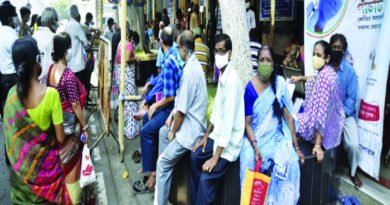India is very much a mature democracy
In spite of the noises being made, at home and abroad, the truth is that India under Modi is the most inclusive democracy
Indians are probably among the most argumentative polity by nature, a trait that is seen in full flourish in any functioning democracy. Any sceptic or critic to the contrary in the ‘Age of Modi’ needs to just observe the memes, jokes and cartoons of the elected leaders on their WhatsApp forwards, which could not be in free-float in a flawed democracy. Or, just peek into the Twitter universe, and read through the first 50 tweets on your timeline to get a feel of the free-for-all views, both pro and anti-establishment. Or, just glance through the editorials of media houses that are democratically empowered enough to maintain an anti-establishment stance. Or, simply channel-hop at the prime time national debates. Amidst the cacophony of newshour debates, does one spot any hint of suppression or repression by the establishment? To the contrary, we may just be guilty of a revelry of ‘over-democracy’!
The watchdogs of democracy, Freedom House of the US and The Economist’s Democracy Index, have displayed a distinctly skewed western bias in unilaterally downgrading the quality of Indian democracy to being “partly free”, which is like saying a woman is “partly pregnant”.
So, what are the fair metrics to gauge freedom of expression? “Should newspapers be allowed to publish cartoons of Prophet Muhammad?” The answer is ‘No’. “Does the struggle against terrorism justify the Government reading your emails?” The answer is ‘Maybe’, as there can be no binaries when the Governments have to combat terrorism. “Between Facebook and the Government, do we have any privacy left?” The answer is ‘None’. Clearly, in the highest traditions of maintaining plurality, the freedom of expression can never be absolute, but comes with responsibility, self-restraint and subjective interpretations.
Let’s remember that social media never existed during the time of Indira Gandhi’s rule, and was negligible during Sonia Gandhi’s proxy rule during the UPA years. Had social media been prevalent, it is anyone’s guess if the erstwhile rulers would have permitted such laissez-faire critique as the Modi Government tolerates?
Coming to the Centre-State relations in upholding democratic dharma, within India’s diverse and complex federal structure, agriculture, education, health and housing are State subjects, so Modi, or any Prime Minister, has to manage multi-polarity through dialogue, discourse and ultimate consensus. This is because the Centre neither has the constitutional powers to, nor can it succeed, in imposing its writ on strong and well-entrenched, grassroots-level State chieftains of the likes of Uddhav Thackeray, Mamata Banerjee or Naveen Patnaik.
The fact that the BJP, which is the world’s largest and richest political party with a membership of 150 million, succeeded only partially in increasing its footprint into West Bengal despite a fiercely contested battle, bears testimony to one of the fairest democracies of the world.
The second exemplification of conferring too much democracy has been allowing the farmer’s agitation to persist since mid-November despite their non-negotiable stance which obstructs fourth-generation reforms. The fact is that a Government with a strong mandate could and should have clamped down hard on such activism. Instead, the Centre ceded excessive ground on issues like hazardous stubble burning being allowed to persist, continuing to subsidise power bills and supporting the MSP on unsustainable water-guzzling crops…. Any lack of democracy here, considering farmers constitute 60 per cent of India’s population?
No ranking of democratic metrics can be considered authentic which does not take into account a coherent counter-reality of the dedicated anti-Modi lobbies as seen within the social media universe, NGOs, and the think-tanks of the Left liberals. There exist thriving vested political and business lobbies within and outside of India that target to dethrone Modi for personal agendas on the pretext of India’s descent into ‘illiberalism’. They all cite the familiar and cliched tropes about the regime’s fascist orientation as seen through “Hindu nationalism” or “minority victimhood” labels that have unfairly stuck with Modi.
Let me blunt this myth firmly with a quote from Modi himself requesting peace and equilibrium on the historic Supreme Court judgment on Ayodhya in his tweet on November 9th 2019: “This verdict shouldn’t be seen as a win or loss for anybody. Be it Ram Bhakti or Rahim Bhakti, it is imperative that we strengthen the spirit of Rashtra Bhakti.” Clearly, Modi implied no celebration be undertaken on a day that was bigger in symbolism for Hindus than Diwali itself. If anything, even under Modi, while political parties shunned appeasement, but in the homeland of the majority community, we persisted with our obsession with obverse secularism.
I have deliberately not delved into the distant past to substantiate why I believe India remains a mature and thriving democracy, but have cited just five recent instances since November 2019 to reiterate the Modi regime’s conformity and commitment to democratic tenets. To sum up, the Indian democracy is an edifice that is so deeply entrenched, it is impossible to reverse its trajectory or dismantle its institutions even by the strongest and tallest leader of this century.
(The writer is an author, columnist and Chairperson, NCFIL, at the NITI Aayog. The views expressed are personal.)
Source: The Pioneer




